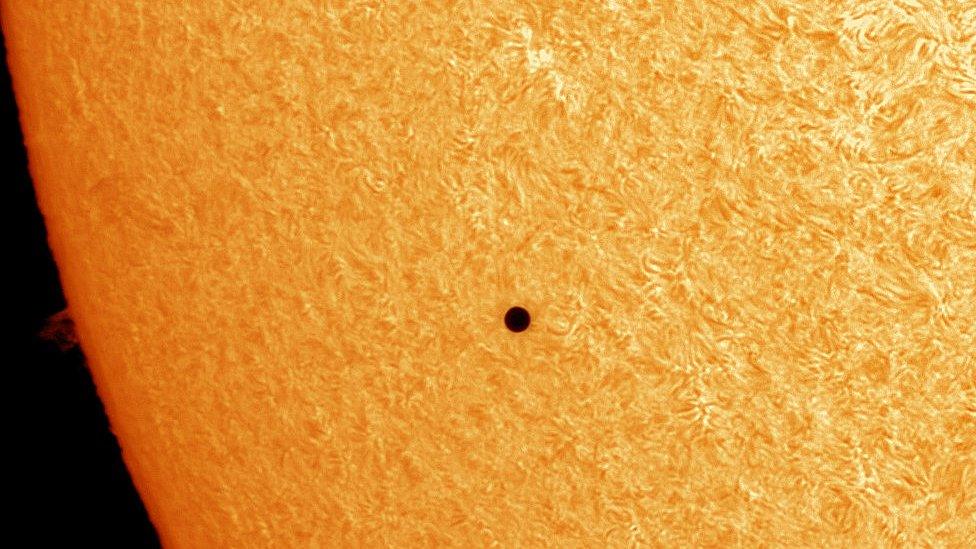Mercury: How to spot the planet in the night sky in February
- Published
- comments

This image shows Mercury in silhouette as it sits in front of the sun
Planet Mercury can hardly ever be seen in the night sky, but there'll be a rare chance to see it in the next couple of weeks.
The planet is really close to the Sun - in fact it's the nearest planet in our solar system to our star - to which means it's usually difficult to see.
But you might be able to catch a glimpse of it over the coming fortnight because of the way the planets are positioned - or aligned.
How to spot planet Mercury in the night sky
Mercury will be visible in the evening, around 35 to 40 minutes after sunset.
You don't need a telescope to spot it - you should be able to see it with your eyes.
Mercury will be visible very near to the horizon. To make sure you're looking in the right direction, it's recommended that you look for the planet Venus, shining very brightly nearby.
Once you've spotted that, look to the lower right and you'll come to Mercury.
This image from NASA shows Mercury in the background
The planet should have a yellowish-orange tinge.
No other stars will be visible at this time, so only Venus and Mercury will shine through.
Good luck spotting it.
Let us know in the comments if you manage to catch a glimpse of the planet.
If you cannot see the interactive activity on this page, click here.
- Published14 July 2011
- Published6 January 2020
- Published16 July 2015
